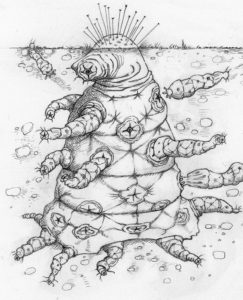Samuel Levin in Aeon:
 What would convince you that aliens existed? The question came up recently at a conference on astrobiology, held at Stanford University in California. Several ideas were tossed around – unusual gases in a planet’s atmosphere, strange heat gradients on its surface. But none felt persuasive. Finally, one scientist offered the solution: a photograph. There was some laughter and a murmur of approval from the audience of researchers: yes, a photo of an alien would be convincing evidence, the holy grail of proof that we’re not alone.
What would convince you that aliens existed? The question came up recently at a conference on astrobiology, held at Stanford University in California. Several ideas were tossed around – unusual gases in a planet’s atmosphere, strange heat gradients on its surface. But none felt persuasive. Finally, one scientist offered the solution: a photograph. There was some laughter and a murmur of approval from the audience of researchers: yes, a photo of an alien would be convincing evidence, the holy grail of proof that we’re not alone.
But why would a picture be so convincing? What is it that we’d see that would tell us we weren’t just looking at another pile of rocks? An alien on a planet orbiting a distant star would be wildly exotic, perhaps unimaginably so. What, then, would give it away as life? The answer is relevant to our search for extraterrestrials, and what we might expect to find.
Astrobiology – the study of life on other planets – has grown from a fringe sub-discipline of biology, chemistry and astronomy to a leading interdisciplinary field, attracting researchers from top institutions across the globe, and large sums of money from both NASA and private funders. But what exactly is it that astrobiologists are looking for? How will we know when it’s time to pop the Champagne?
More here.
